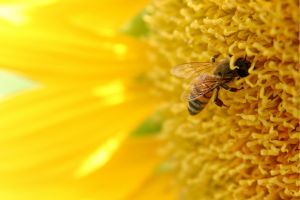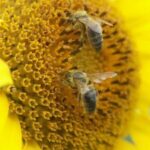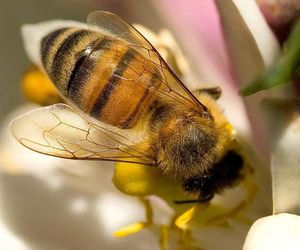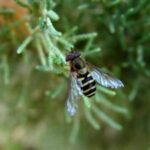Are you searching for facts and information about bees? Are you writing a research paper or science report about bees and looking for information? Are you a teacher or home school parent preparing a lesson plan about bees? Did your child just see a bee outside and you’d like to make a lesson out of it? Here are a few random facts about bees for kids.
There are about 20,000 types of bees.
Scientists have discovered about 20,000 different species of bees. About 3500 of these species live in North America. Scientists believe there are many other types out there that haven’t been noticed yet.
Bees play a crucial role in plant reproduction.
Bees help plants reproduce. They carry pollen from one flower to another, this helps the flowers reproduce. Without the help of bees, many plants would not be around. Since many animals need plants to survive, bees indirectly help other animals survive as well. They help over 250 different types of flowers.
Bees use the flower pollen to feed their young or larvae.
The pollen that bees take from the flowers is used to feed baby bees. The pollen is very rich in protein.
Bees vary in size.
Some bees are very tiny and some are bigger than flies. Bees range in size from 2 millimeters to 4 centimeters.
Out of all of the bee species, the only ones that make honey are honeybees and bumblebees.
Not all bees make honey. Honeybees and bumblebees are the only ones that create and store honey.
Bees experience four stages throughout their lives.
Bees go through four stages. They are egg, larva, pupa and adult. You can learn about it in this educational video here.
There are roughly 30,000 bees in each colony.
A group of bees is called a colony. Scientists estimate that approximately 30,000 bees live in one colony. Their home might be a deep crevice, an empty and hollow tree, or a hive managed by beekeepers.
Honeybees are not native to North America.
While there are plenty of honeybees around in North American now, they are not native to the area. In 1622, settlers from England took honeybees with them to the land. Native Americans referred to them as “white man’s flies.
Bees communicate by smelling other bees with the tips of their antenna.
Bees have two antenna and, like other insects, use them to communicate.
Bees come in a variety of colors.
Some bees are dull black and other bees are “glittering green.” A few species of tropical bees are bright red and blue. Some even sparkle in the sun.
To create one pound of honey, bees must visit about 2 million flowers.
It takes a lot of flowers to make just a small amount of honey. Bees must visit about 2 million flowers, just to make one pound of honey.
A Queen Bee can live up to five years.
The lifespan of a bee depends on the time of year, and the type of bee. However, a queen bee can live up to five years. Worker bees usually only live around 40 days, depending on the season.
African “Killer bees” came to South America in 1957.
In 1957, the only honeybees were European honeybees. However, that year, some African honeybees were shipped to a laboratory in Brazil. They were used for an experiment. No one is exactly sure what happened, but somehow the bees were released. Since 1957, the bees have slowly been moving north and by 1999, they had reached many parts of the US. They are in Texas, Arizona and California. However, scientists believe that cold winters will keep them from moving much farther north.
The sting from an African Honeybee (“Killer Bee”) is no worse than a regular honeybee.
Contrary to belief, the sting from a honeybee is nearly the same as a killer bee. However, they attack in large groups. Therefore, they are more dangerous because an attack in large numbers can be enough to kill a horse or person.
These are just a few fun facts about bees for kids. Wanting to learn more random facts? Take a look at “Facts for Kids About Ants.” You also might read “Facts for Kids About Grasshoppers” and “Facts for Kids About Lady Bugs.” Happy Learning!
SOURCES:
What’s the Buzz? The Secret Lives of Bees by Margery Facklam
Insect Facts and Folklore by L. Patricia Kite
http://www.britishbee.org.uk/faq.php





